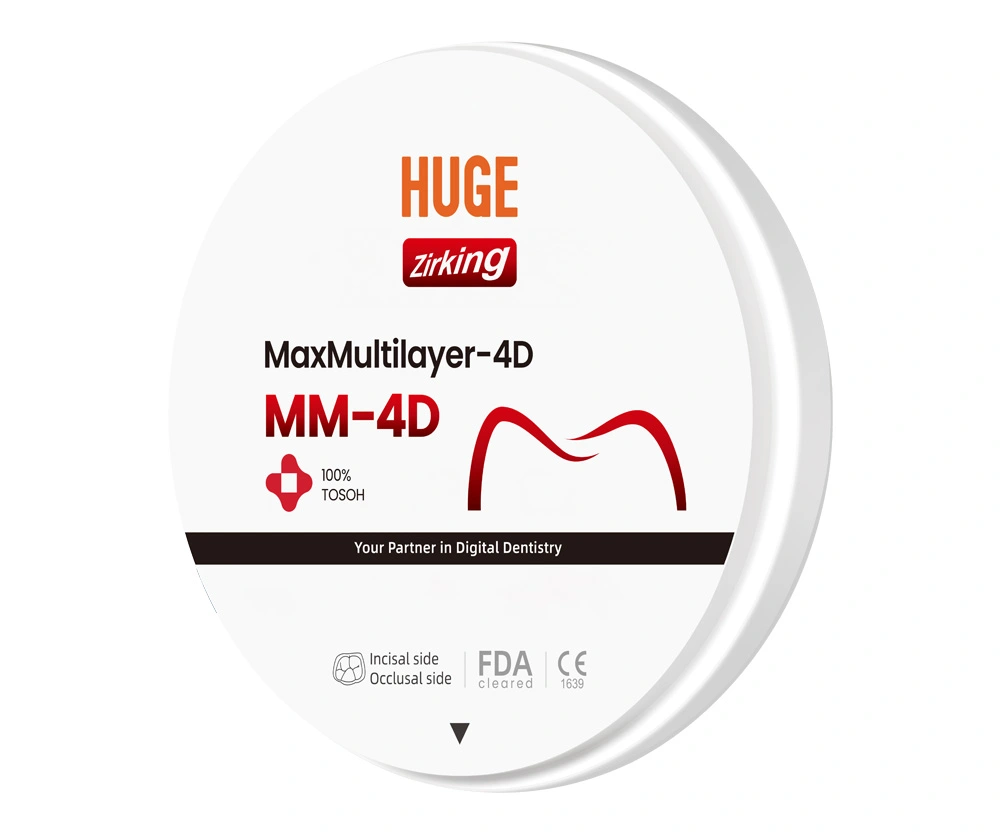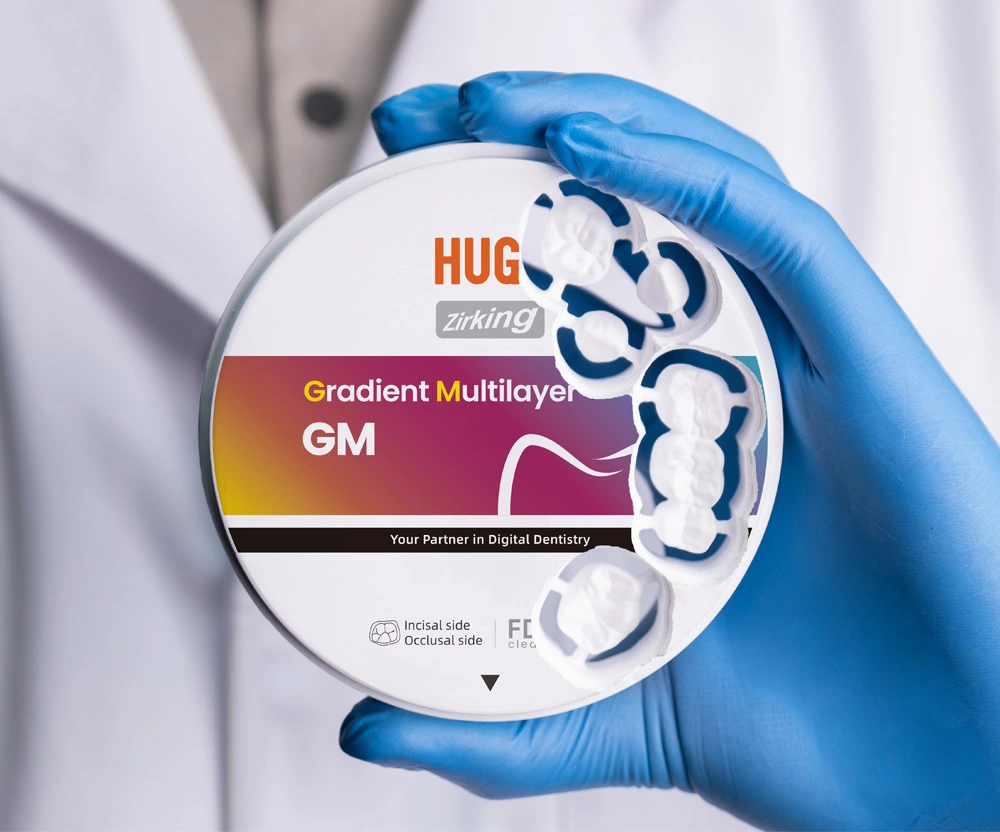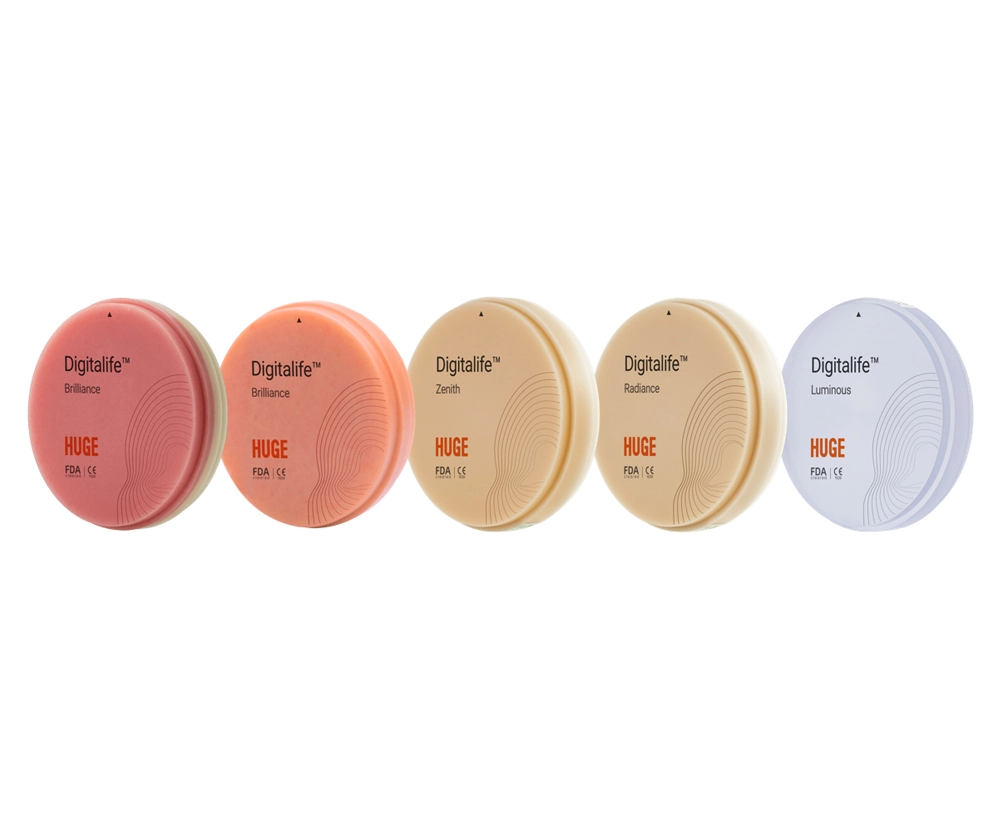Dental CAD/CAM Materials
Dental CAD/CAM (Computer-Aided Design/Computer-Aided Manufacturing) materials are used in the creation of dental restorations such as crowns, bridges, and veneers. These dental CAD/CAM materials are designed to be strong, durable, and aesthetically pleasing, while also being compatible with the CAD/CAM software used by dental professionals.
Some common dental CAD/CAM materials include ceramics, such as zirconia and lithium disilicate, as well as resin composite CAD/CAM blocks and metals like titanium. These dental CAD/CAM materials are often chosen for their biocompatibility, strength, and ability to blend in with the patient's natural teeth.
-
Zirconia Blocks - Premium 100% Tosoh Material
Zirconia Blocks-Premium is a strong, durable, and esthetic dental material used in dentistry for making crowns, bridges, and veneers. It is biocompatible and can be easily shaped and colored.Learn More -
Zirconia Blocks - Prime
Zirconia Blocks-Prime is a high-performance dental material for making crowns and bridges. It is durable, strong and bio-compatible, making it an ideal choice for dental restorations.Learn More -
PMMA Blocks
PMMA Blocks are transparent acrylic blocks made from polymethyl methacrylate. They are durable and lightweight, making them ideal for use in many applications.Learn More -
Flexible Blocks
HUGE Flexible Block is fabricated from a strong biocompatible nylon thermoplastic compound. For the production of removable partial dentures (RPD'S), invisible crystal clear frame-works, night guards...Learn More -
Casting Wax
For lost-wax casting, to fabricate dental wax patterns. These patterns are reproduced in gold or other material in the fabrication of crowns, bridges and fixed and removable partial dentures.Learn More
What to Consider When Selecting Dental CAD/CAM Materials?
-

Strength and durability
The dental CAD/CAM materials should be strong enough to withstand the forces of biting and chewing, as well as resist wear and tear over time. -

Aesthetics
The material should be able to match the color and translucency of the patient's natural teeth, and also maintain its appearance over time. -

Biocompatibility
The material should be safe for use in the patient's mouth, with minimal risk of allergic reactions or other adverse effects. -

Processing characteristics
The material should be compatible with the CAD/CAM system being used, and easy to mill or print into the desired shape and size. Additionally, it should have minimal shrinkage during the processing steps designed by dental material manufacturers to ensure accuracy and fit of the final restoration.
 English
English 日本語
日本語 français
français Deutsch
Deutsch Español
Español русский
русский português
português العربية
العربية



